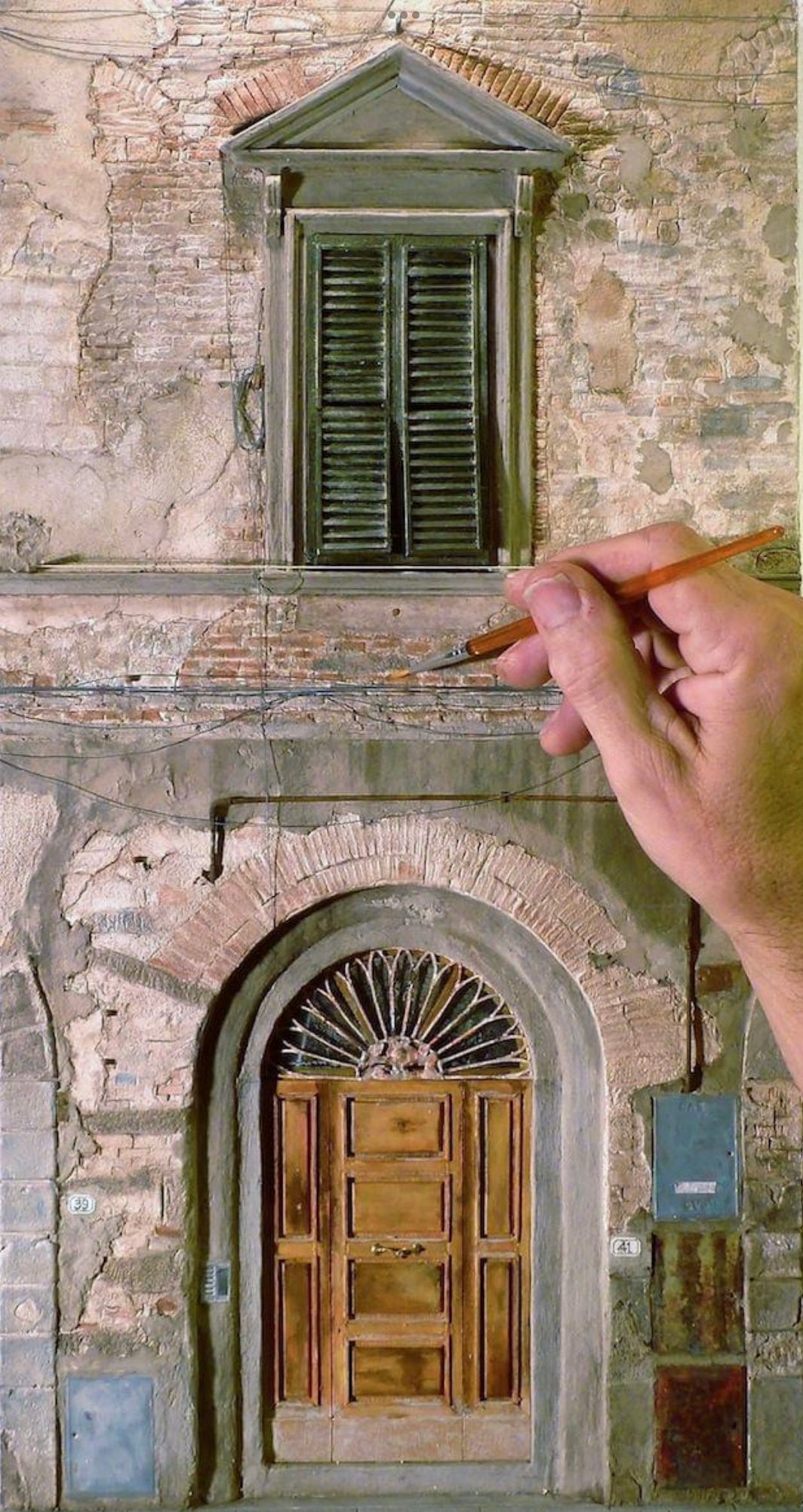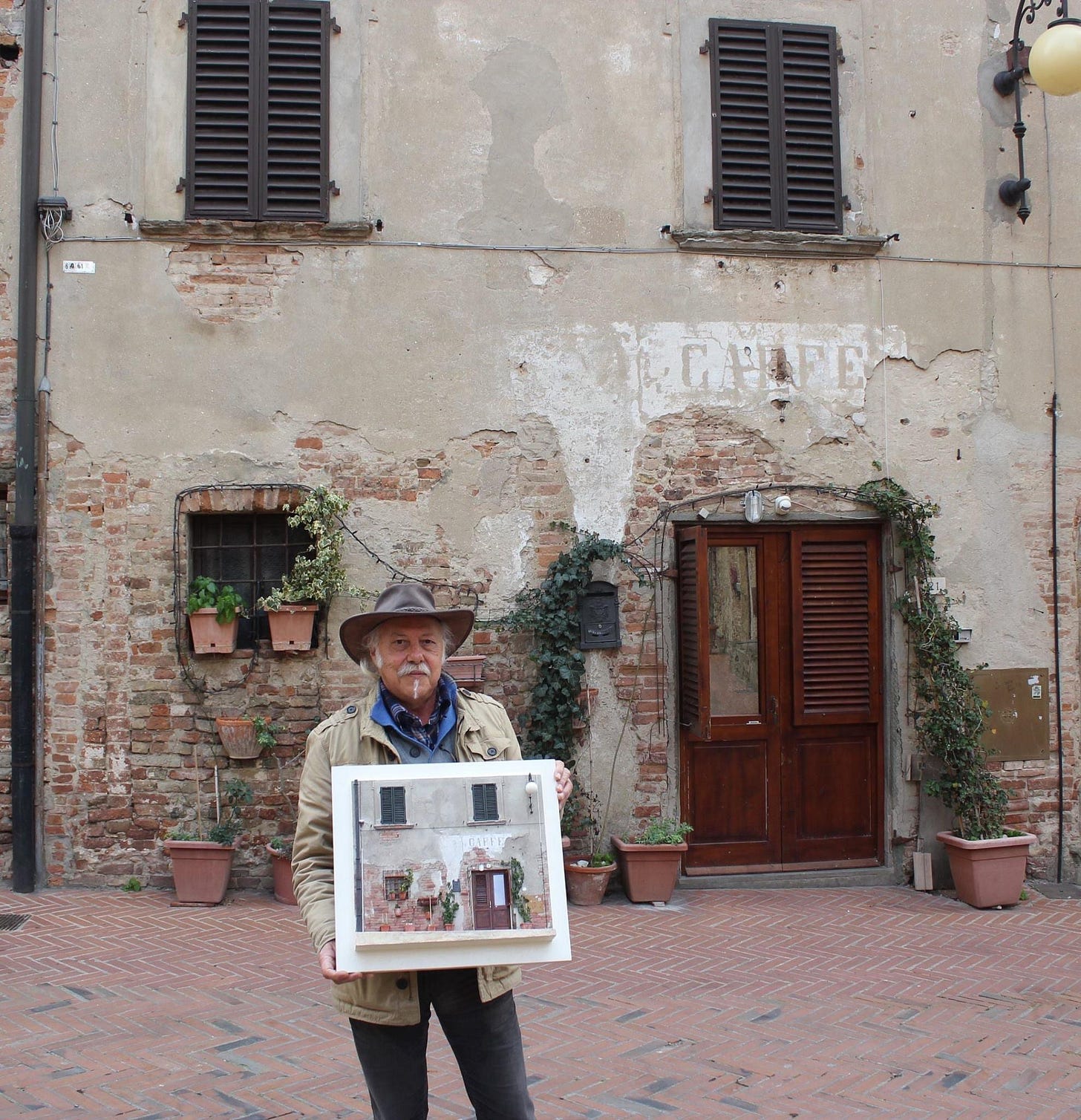When we first started living together many years ago, Roberto handed me a lamp that fit in the palm of my hand: wood lathed base with a silk shade that covered a tiny computer bulb underneath. The plug fit into a tiny socket that he had wired up with a battery to fit into an imaginary wall. It wasn’t so much the minuteness that was fascinating, but the perfection – every detail treated with utmost care. I would watch him sitting at his small table in our bedroom, Gulliver on his travels casting out to sea disappearing into the fog of his focused artistry. At first his creations were rudimentary, tiny boats from pistachio shells, chairs from champagne wires, trash cans from pen caps, lathed bottles from plastic tubes, but as he continued his Lilliputian travels, he would become evermore expertise, and the wayfarer would bring back perfect gifts to delicately place in the palm of my hand.
Around that time, I went to Michigan for a short holiday break to see my family and get my bearings to see where life could lead me once I finished the art restoration program in Florence and headed back to Michigan. There were promising positions I could have in the U.S., the great big land of the free, compared to what I could find in Tuscany in the tiny boot-shaped country of Italy.
When I got back to Florence from that holiday break, Roberto and I felt that sense of urgency because the time for me to return permanently to my “grande America”, as he would say, was getting closer. I had just put down my suitcase when I noticed a box wrapped in Christmas paper waiting for me on the kitchen table. It was larger than anything Roberto could have brought back from Lilliput, but no bigger than a shoebox in any case. He looked at me in silence, holding his breath, as if opening the lid would create an explosion. The anticipation in his face clicked like a time-bomb, and so I slowly peaked in.
The vision seemed unreal in its realness. I had to touch it to make sure what I was seeing wasn’t just a photo: the front door to his home — the house I had been living in for over a year — had a tiny brass door knob shined from years of use, made from a brass paper fastener. The graystone around the fairy-sized door was crumbling in exactly the same places as the human-sized one. Cast-iron bars over the small window and the gutter tube running alongside the doorway had red streaks of rust dripping down the side. The massive hand-made stones of the building from 15th century Florence were downsized to thumb-size. I shrank down to observe the crusted wooden door of the street entrance and the stone step underneath, the one I had stepped on hundreds of times without giving it a moment's thought. The black soot on the wall marked the height of exhaust fumes and the scratches on the plaster marked where bikes parked on the sidewalk had squeezed past parked cars.
I could not stop looking at the place I had seen hundreds of times before. Every detail confirmed the passage of time, all there in that box, the facade of the front door entrance cut away into a small square that Roberto had brought back from his minute artisan journeys to hand to me, to make me marvel, to make me ponder what I had seen every day during our time living together. And there at the bottom of the piece was the inscription: “Per non perdere la strada”, “So you don’t lose your way”. I stared and held the box that help my little doorway and knew, then and there, I would not lose my way. I stepped into that miniature scene, went through the tiny doorway, and entered his world in his tiny country that happened to be just the right size to enter into my life.
******
Although I had never been involved with the contemporary art world, once I saw the piece I couldn’t help but think my purpose was to push Roberto to do more. He was an electronics technician at the time, but he had ancient artistic blood running through his veins coming from his Etruscan descendants. I promised him I would organize an exhibit for him, somehow, if he could get a good collection together. His motor clicked without hesitation; he would wake up early before going to work and sit at his small table creating the base, the walls, every minute detail to then add to the facade he had chosen to recreate.
He would delve into minutia with every free moment he had. One day he came home from work and said, “Look what I did on my lunch break …” From his pocket he pulled out a piece of paper, carefully unfolded it, and there lying in the folded creases were minuscule, almost invisible, cigarette butts that could get lost in the crevice of the palm of my hand. He had cut the tiny dimensions from a real cigarette, between the yellow filter and white paper, and rolled a dozen butts no bigger than 3 mm in length to then place carefully on the sidewalks of his shrunken Florence.
Every piece has a story, every detail of every facade, way too many to tell here. My life cannot be separated from Roberto’s, and I did help him along and organized shows with the city of Florence, Milan, Rome, Ok Harris in New York (where Ivan Karp coined the pieces “Urban reliefs”), various other states in the U.S., etc. And after all these years, the creations continue…
You can see more of his collection on his Facebook page “Roberto Menchiari’s Miniatures of Florence” :
https://www.facebook.com/profile.php?id=100031140074336








I love this story so much! Roberto is a rare man- full of love, life, and talents extraordinaire!
great story! I just assumed Bob was born creating miniatures! thanks Lil